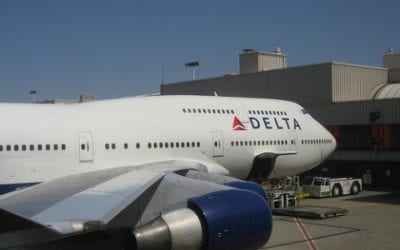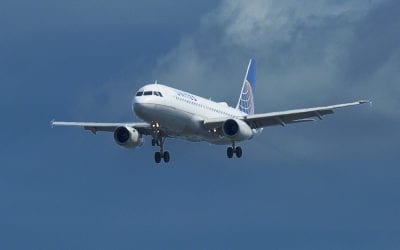Thanks to Christopher Elliott for mentioning the unmentionable — “class” — in an article in USA Today on “the growing rift between the ‘haves’ and ‘have-nots’ in travel.”
This was excerpted from Edward Hasbrouck’s blog. Read the complete story here.
As always, the airline industry is boldly leading the way when it comes to separating the well-heeled from the rest. But make no mistake: The travel industry is following, often enthusiastically. Remember, only a fraction of American travelers fly; the rest drive or use mass transit. Consumer advocate Edward Hasbrouck sees the class war unfolding on the ground in places such as San Francisco, where mass transit can be tedious and unreliable, unless you’re one of the privileged commuters with a ticket on a private express bus.
“There’s a dramatic contrast between waiting for slow, late, overcrowded public transit and the luxury buses, hiding their occupants behind spotless tinted glass, that pick up thousands of moneyed young geeks every day and whisk them off to the Silicon Valley campuses of Google, Facebook and Yahoo,” he says.
Hasbrouck fears a day might come when the class divide will resemble a scene from a dystopian novel. Something like it already exists. In São Paulo, laborers spend hours on overcrowded buses getting to and from work, while the affluent are carried by helicopter from the rooftops of their condo towers to the rooftops of their office towers.
“That,” he adds, “is the most extreme class divide in transportation.”
The article and the comments on Facebook are worth reading, but I hope they are only the start, not the end, of an overdue discussion of class, privilege, and travel.
To be clear, “It’s not about the buses,” as my Mission District neighbor Rebecca Solnit recently wrote. The private shuttle buses and the tech workers who ride them between homes in San Francisco and offices in Silicon Valley are merely the most visible symbol of a problematic civic dynamic.
When my partner and I moved to San Francisco in 1985, we settled in the Mission District for reasons similar to those of many younger people today: the lifestyle of a dense inner-city neighborhood close to downtown San Francisco, combined with relatively easy access by highway and commuter train to technology-driven jobs in the suburbs.
These days I work at home, and my partner has switched from programming to teaching in a public school in the city. But if our employers when we were working on the Peninsula or in Silicon Valley had chartered express buses to the city for their employees, we would have been riding those buses — happy not to have to drive (I’ve never owned a motor vehicle or commuted by car) or wait for slow, unreliable public buses (been there, done that).
The real flashpoint for protest, I think, is a particular form of de facto privatization, in which “public” services remain nominally in place, but new, private alternatives allow wealthier people to effectively “opt out” of public services which rich and poor alike used to use. Once rich people opt out of using public services or facilities, they tend not to notice their condition and not to want to pay taxes to maintain them. Nor do they think about the fact that most people can’t afford the private alternatives.
In travel, this pattern manifests itself in a growing range of high-end alternatives to common carriers and publicly-franchised and regulated transportation services like medallion taxis. Don’t like the traffic or the condition of the pavement on the public roads? For a price, you can take the private toll roads (or the private toll lanes alongside the free public lanes of some highways). Don’t want to wait for a bus or a cab on a rainy day or a Saturday night? If you are rich enough to pay the Uber “surge” fee, you can get a car right away.
Unlike common carriers or regulated services and utilities, private services aren’t required to provide universal service. Medallion cabs are required to pick up anyone who hails them when they are available, and take them anywhere they want within their authorized territory. Car services like Uber and Lyft can redline certain neighborhoods and “reserve the right to refuse service” to anyone whose reviews they don’t like.
Most large Silicon Valley technology companies have located their office “campuses” in the middle of nowhere, far from either housing or public transit. If they want their employees to have better transportation options, the civic-minded thing to do would be to subsidize public transit routes, operated by public agencies, that suit their employees’ needs. Shuttle-bus riders who want to be part of the solution, rather than part of the problem, should be lobbying their employers to replace private shuttles with underwriting of public transit.
Buses should be allowed to use public bus stops only if they operate as common carriers open to the public, rather than being allowed to pay to use these portions of scarce space on the public right-of-way, previously dedicated to public transit use, for private purposes.
The amounts of money being spent on company-specific private shuttles could support frequent, comfortable express bus service between San Francisco and Silicon Valley, and/or critically needed upgrades to the Caltrain commuter-rail line, that would benefit these companies, their employees, and the public. As it is, the private shuttles divert at least some riders who might otherwise ride (or lobby for) public transit, thus reducing transit ridership and revenues and making the situation worse for everyone except the private shuttle riders.
In air transportation, the ultimate “opt out” is the use of private aircraft to avoid, for a very high price, the hassles of common-carrier airlines. Private charter flights are exempt from TSA screening searches, and often operate from separate “executive” terminals or even separate airports most airline passengers have never heard of, such as those in Teterboro, NJ, for New York City, or Van Nuys, CA, for greater Los Angeles.
On common carriers, segregation of passengers by class on ships and trains has a history that long predates air travel. Steamship lines were accustomed to carrying “steerage” passengers below the decks of even their most prestigious vessels. (On today’s cruise ships, those lower spaces are occupied by crew accommodations.) The same railroads that operated the expresses whose names survive on today’s Amtrak routes also operated much larger numbers of slower, cheaper, trains with fewer amenities.
The first airlines offered only one class, first class in both price and exclusivity. Service on the Pan Am “Clipper” routes in the 1930s, both in flight and on the ground, was comparable to that of the premier single-class “all-Pullman” first-class sleeping car trains of the same era. But as soon as air travel began to be affordable to a slightly wider demographic, airlines began to segment their services and facilities for different classes of passengers.
The first separate waiting room for VIP airline passengers, the American Airlines “Admirals Club” at La Guardia airport, opened in 1939. TWA followed with its first, invitation-only “Ambassadors Club” in 1952. My grandfather, already a frequent domestic and international business traveler at the tail end of the steamship and railroad era, received the membership certificate above, hand-signed by TWA President Ralph S. Damon, in 1953. That was the year the Ambassadors Club opened in New York in conjunction with TWA’s launch of the first scheduled nonstop transcontinental service. (Within a few years these framed certificates with ribbons and gold seals and the member’s name in calligraphy were supplemented by more practical laminated wallet cards.)
Does each class of air travellers pay its fair share? That’s hard to say. An airline evaluates each passenger cabin, as well as the cargo hold, as a separate profit center for each flight. “As a flight attendant, it’s like working for two different airlines on the same plane.” Return on investment is typically much higher for the front cabin(s) and for cargo than for the main cabin. Coach passengers are what an airline uses to fill the space and generate as much revenue as possible from that portion of the aircraft’s capacity that can’t be filled with more profitable front-cabin passengers or cargo. Coach passengers are most of the body count, but airlines see them as filler, not as the people who pay for the plane.
Airlines are heavily subsidized by governments. I suspect that the subsidies for front-cabin (first and business class) passengers are disproportionately greater than those for economy-class passengers, although I’ve never seen any attempt to analyze this. Whether or not this is true, the fundamental inequity is that most taxpayers travel primarily by car, even for long distances, and can rarely afford to fly. Members of the jet set rarely notice that air travel in the USA, even in the back of the plane, is still largely the province of the upper classes. Subsidizing air travel is incredibly regressive.
If you are flying in the back of the plane, does it even matter what it’s like up in front? Probably not.
The practical lesson to take away is that the only reviews and cost comparisons that are likely to be useful are those written by people who travel in the same manner, in the same class, that you plan to travel. Reading about how the other 1 percent or 10 percent travels may make for interesting (or enraging) armchair travel, but it won’t really help you plan your own trip.




